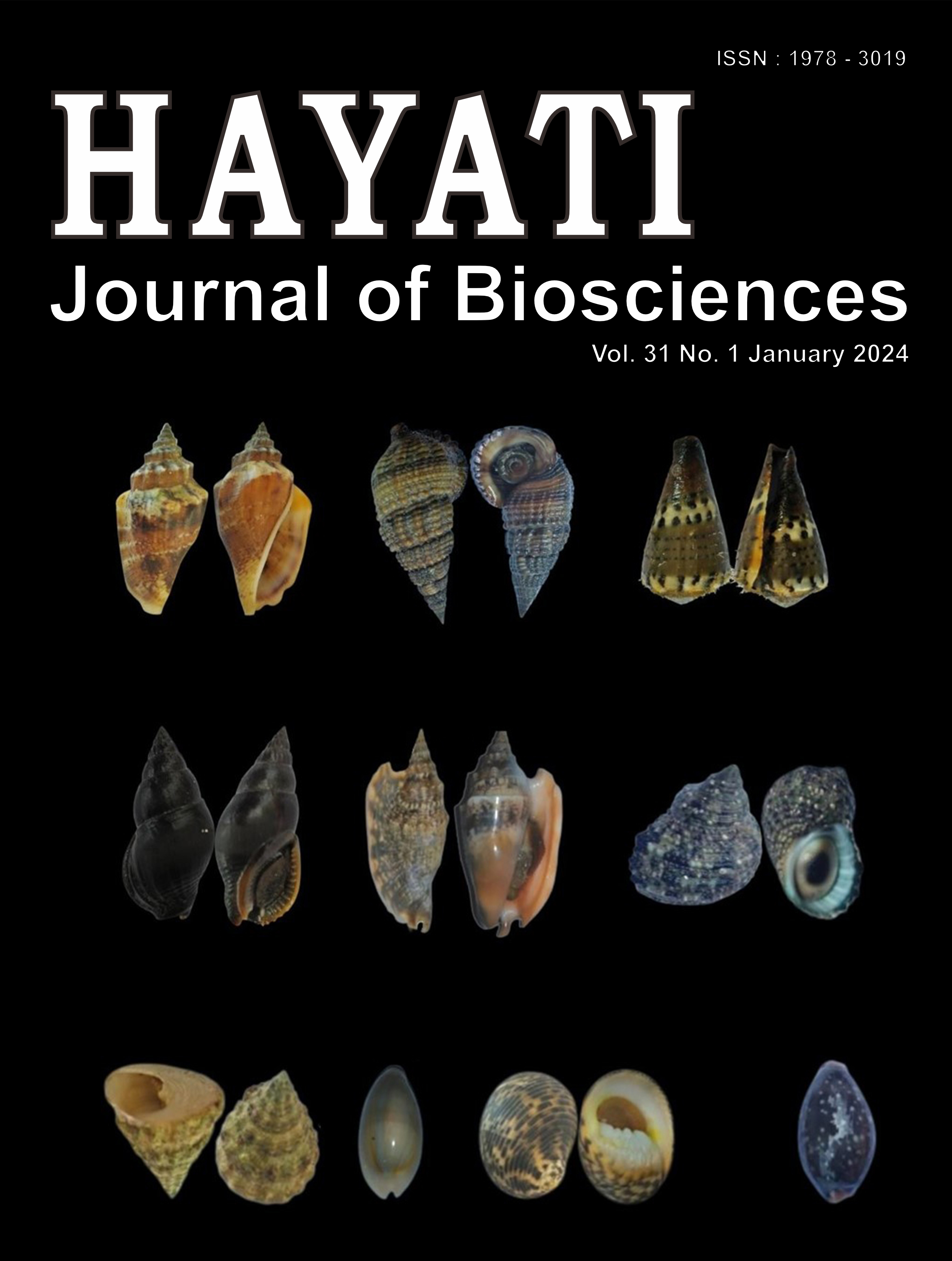Identification, Characterization and Antioxidant Activity of Yellowish-Orange Pigments Actinobacteria
Abstract
Actinobacteria are Gram-positive bacteria that can produce various secondary metabolites, including pigments that have potential as antioxidants. This study assessed the characteristics of yellowish-orange pigmented actinobacteria. The antioxidant activity of their extract pigment was tested by DPPH and analyzed by LC-MS. The identification results based on the 16S rRNA gene showed that the HRA isolate had 99.91% similarity value to Streptomyces gramineus JR-43, the HVA isolate had 99.22% similarities value to S. tendae ATCC 19812 and the HVB isolate had 81.18% similarities value to Rhodococcus ruber DSM 43338. Meanwhile, AGM 2.2 and 2.3 isolates had similarities to S. xanthophaeus NRRL B-5414 with similarity values of 98.95% and 99.82%, respectively. The Inhibitory Concentration (IC50) of actinobacterial crude extract pigments ranges from 53.38 µg/ml to 184.38 µg/ml. The HVB isolates with the major compound luteolin, have the highest antioxidant activity. The crude extract pigment of HVB isolates may consider rich in luteolin and has potency as an antioxidant.
Downloads
Copyright (c) 2023 Farhana Halimah Rusyda, Irmanida Batubara, Yulin Lestari

This work is licensed under a Creative Commons Attribution-NonCommercial 4.0 International License.
HAYATI J Biosci is an open access journal and the article's license is CC-BY-NC. This license lets others distribute, remix, tweak, and build upon author's work, as long as they credit the original creation. Authors retain copyright and grant the journal/publisher non exclusive publishing rights with the work simultaneously licensed under a https://creativecommons.org/

























.png) IPB University
IPB University Department of Biology
Department of Biology The Indonesian Biological Society
The Indonesian Biological Society 

